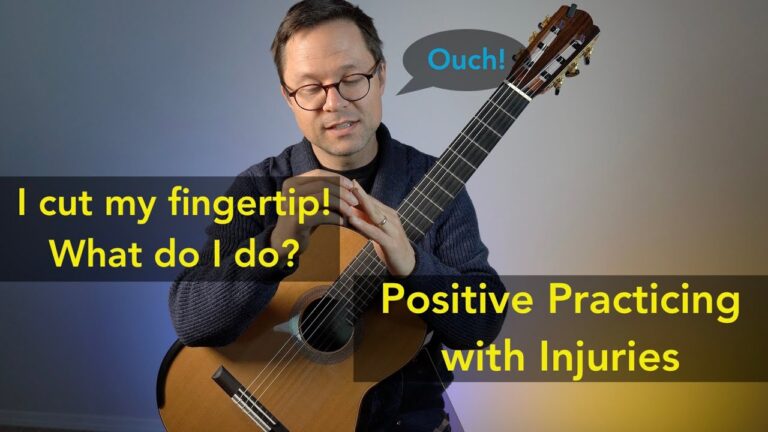This exercise is from my new book Classical Guitar Technique: Essential Exercises, Scales, and Arpeggios.The 122 page book includes: Practice Routines, Tips, 100 Open String Exercises, 120 Giuliani Arpeggios, Scales, Slur Exercises, Shifts, Finger Independence, Barre, Tremolo, Common Harmonics, and much more.
Giuliani’s 120 Arpeggio Exercises for the Right Hand from Op.1 – These patterns represent a significant study of classical era guitar playing and offer an opportunity to develop dexterity in the right hand. Practice as solid chords and broken as well as with full and sequential plants. For extra practice, try playing a light rest stroke thumb with free stroke fingers which can help to develop a secure right hand. See the practice routines in the preface for an order based on your level.





I was practicing Arpeggio #120, page 53, for quite a while and after I completed it, I noticed that it appeared that I had been doing it wrong. In the first measure you have a “b” instead of a “c” for the 3rd note. It seemed a little awkward, but I practiced it that way until I could play it smoothly. Then I checked some other versions of the arpeggio and found out that it actually was a “c” and not a “b.” Maybe I read the notes more carefully than most, but I think you might want to correct it or explain if this is the correct note. Thanks for your work.
You are correct! It should be a C. I’ll correct that soon. Thanks for pointing it out.
I have a question about Giuliani’s 120 Arpeggio Exercises for the Right Hand. Since the study is for the right hand, why use such a (for me) awkward version of G7. In fact, should the left hand fingering even matter?
You can certainly practice them with open strings but there is an element of synchronization between the hands. In my technique book I present 100 open string exercises first and then the Giuliani 120. If the G7 chord give you trouble you might want to look into your position and left hand technique but also just practice them in small doses to reduce potential strain.
Hi Bradford, Have you by any chance explained anywhere tips for improving the placement of the 2nd finger LH on the G7 chord to stop it from touching the D string? I have twisted myself into contortions to stop that buzzing! AND I have really small hands so it is really difficult. Thanks, Laura
This issue usually has to do with guitar position and height, angle of the guitar, and curvature of the left hand fingers.
Left Hand Position for Classical Guitar
Left hand stretches (beginner to intermediate)